 Mirrorless Choosing Guide 2024
Mirrorless Choosing Guide 2024
Choosing a Mirrorless Camera & System
How to Choose a Mirrorless. In this page, learn what features are available and unique to mirrorless cameras. Plus, read about the key factors to consider when choosing a mirrorless system. For general information on what mirrorless cameras are and compare, start reading from Step 1.
Mirrorless Camera Features
Universal Features
There is a huge gamut of mirrorless digital cameras that encompasses everything from entry-level to high-end professional models. Even the most basic mirrorless offers Full Manual Controls, Manual-Focus, Spot Metering, Custom White-Balance and more. Expect all these cameras to offer functions universally found on entry-level DSLR offers with two exceptions:
- These are a handful of models which do not have a viewfinder with no provision to add one. Many low-cost models support an Optional EVF via a proprietary connector which may block the hot-shoe, meaning either the Optional EVF or an External Flash can be used but not both at once.
- Certain models omit either a hoe-shoe or a built-in flash, although no model has omitted both since 2011. Those without a hot-shoe are always very compact entry-level offerings that would be seriously unbalanced with an External Flash attached.
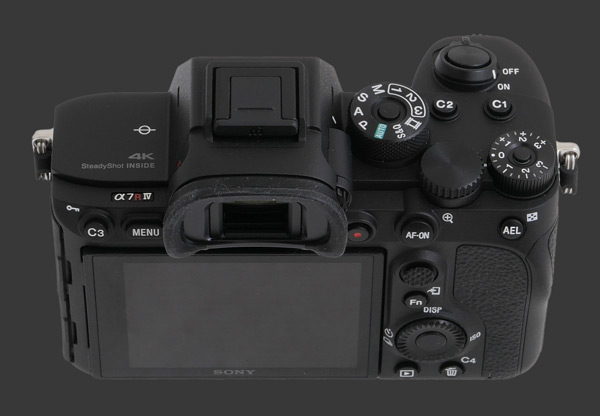
All current mirrorless have a broad exposure latitude with a shutter-speed range that matches entry-level DSLRs or exceeds them. Particularly high shutter-speeds above 1/8000s are simply not possible using a mechanical shutter. Mirrorless cameras and even a few compacts can reach 1/40000s, allowing them to freeze incredibly fast action. On the other hand of the spectrum, all mirrorless are capable of exposing for 30s but not many can take longer exposures. Bulb mode, which is standard on DSLRs, is not available on all mirrorless. Even when it is available, there is often a limit of a few minutes, typically between 2 and 15 minutes.
As with all interchangeable lens cameras, the aperture range and minimum focus distance of mirrorless ones is determined by the lens being used. Most lenses support screw-on filters to modify incoming light.
Ergonomics
Even though one can expect complete photographic controls on all mirrorless cameras, the accessibility of these features differs greatly. Every mirrorless offers at least one control-dial, with two being twice as common and a good number even providing three, something which only exists on Pentax DSLRs. A Mode Dial is also very common yet not universal.

The most criticized ergonomic aspect of mirrorless digital cameras is clearly their Electronic Viewfinder, known as EVF. Early EVFs had very poor resolution with Minolta introducing the only 1 megapixel EVF in their prosumer cameras where it remained unmatched for years. Sony eventually acquired Minolta which had merged with Konica. The lowest resolution EVF in mirrorless during the last 5 years is 1.4 MP which is detailed yet not so sharp. Only a small minority use such viewfinders. Most modern mirrorless though have very sharp units with 2.4 to 3 megapixels of resolution. Those look very sharp and make it possible to confirm focus.
Newer EVFs are extremely sharp and so detailed that the human eye cannot distinguish pixels. Most high-end mirrorless now feature EVFs with at least 3.6 megapixels. In 2020, EVF resolution reached 9.4 MP. This state-of-the-art technology not only provides higher resolution but also a significant boost in contrast. The top EVF units claim to show 1:1000 contrast which provides a much more natural preview. While the human eye can adapt to high contrast, gain can be applied to an EVF to brighten the preview down to very low light levels. This is a fantastic advantage for photographers that use ND filters to create longer exposures.
The apparent size of a viewfinder is called its Magnification. Higher magnification greatly improves comfort and usability. Although EVFs have a size measured in inches, typically 0.39-0.5", there are optics that magnify and focus the image. This results in EVFs of the same size having sometimes different magnification. The EVF is an expensive electronic component and so lower-cost mirrorless usually have smaller units that show around 0.6X magnification. The majority of mirrorless provide a larger 0.7X or higher magnification which is similar to most professional DSLRs. The latest flagship mirrorless cameras even have huge 0.9X magnification EVFs. See the EVF Size Article for exact and always up-to-date numbers.
Exclusive Features
There are significant advantages to constantly reading from the imaging sensor. The resulting stream of data is used to generate the Live Preview, measure focus, perform metering, compute white-balance and analyze the scene. This makes it possible for mirrorless cameras to simulate exposure, track small details down to a single eye, apply sophisticated metering patterns, generate a Live-Histogram, determine what type of scene is being photographed and analyze the preview to show edges in focus or improperly exposed areas.
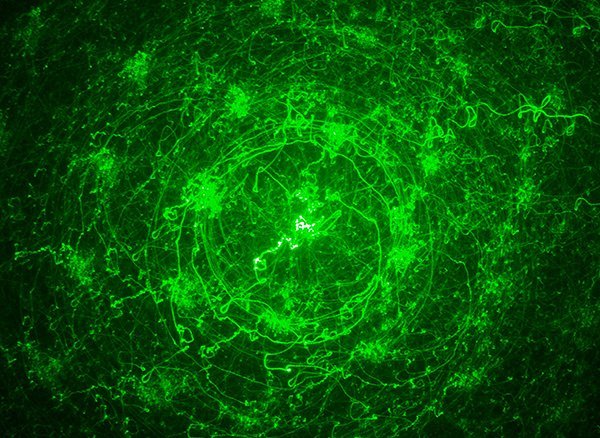
Live-Preview lets mirrorless digital cameras offer exclusive features such as Sweeping Panorama, Multiple Exposure preview, HDR preview, refocus images, change aspect-ratio and even show an exposure in-progress during Bulb or Timed exposure. Keep in mind that these features are not available on all mirrorless since manufacturers are still discovering the technology and constantly innovating.
Manual Focusing was traditionally difficult with anything other than a Reflex Optical Viewfinder (OVF). This now turned around completely in that EVF offer superior Manual Focus experience. The ultra-high resolution of modern EVFs makes them impeccably sharp and match the best OVFs. Plus, the majority of mirrorless cameras offer at least one MF-Assist modes. The most common is Electronic Magnification which zooms onto one part of the frame to increase magnification. Many add Focus-Peaking which highlights edges of maximum sharpness, effectively outlining in-focus areas.
Video Capabilities
Mirrorless cameras are the most capable hybrid cameras on the market. All can record at least Full HD (1080p) and plenty capture 4K Ultra-HD at 30 FPS. An increasing number reach 60 FPS at 4K or record wider Cinema 4K which has a 17:9 aspect-ratio. Capture speeds of 120 FPS at Full HD are also possible with even higher frame-rates at lower resolution.
Autofocus remains fully functional while filming since mirrorless cameras always use their sensors to measure focus. Exposure is also computed exactly the same way for still and video which allows for good consistency. All DSLRs essentially turn into mirrorless cameras while recording video by moving the mirror out of the way. This forces them to switch a different AF system, use on-sensor metering and prevents filming with the camera at eye-level. Some DSLRs perform very well in this mode yet they are not designed that way and so they rarely fully match the video performance of mirrorless cameras.
Going Mirrorless
Nowadays, the default type of digital camera to consider is a Mirrorless. Nearly every manufacturer produces several models aimed at different levels of photographers and the lineup of compatible lenses is increasing rapidly. With many advantages and unique features outlined on the previous page of this Mirrorless Buying Guide, there are few reasons to choose a different type of camera.
Mirrorless cameras are flexible system cameras yet this can be more complex than needed for some users. For those people, the answer is a Premium Compact which is an all-in-one camera with a large sensor paired and fixed lens in a body with efficient controls and viewfinder. These are particularly worthy compared to a mirrorless that will only ever be used with a dim kit lens. Below left is the Panasonic Lumix DC-LX100 II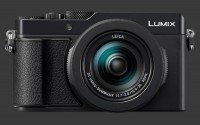
Panasonic Lumix DC-LX100 II.

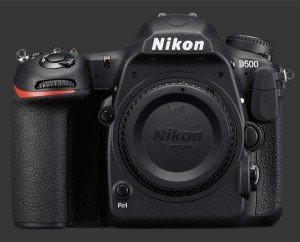
A DSLR is worth considering for its Continuous AF speed which still as an edge over comparable mirrorless cameras, even though those can capture at much faster frame-rates. While mirrorless cameras are more adaptable to using legacy lenses, having a set of native lenses for a DSLR system is a reasonable incentive to stay. Most manufacturers that also offer DSLRs have made considerable effort to maximize the performance of their own lenses adapted to their mirrorless system. Above right is the Nikon D500
Nikon D500 action APS-C DSLR.
Choosing a Mirrorless Camera System
Having decided to go for a mirrorless camera, the time comes to sort through mirrorless systems and camera models. There two main scenarios to consider:
- Mirrorless as primary camera. A primary camera must satisfy most of your photographic needs and requires more investment in a system.
- Mirrorless as secondary camera. A secondary camera is chosen when the primary system is inconvenient. It therefore does not need to be so versatile and may serve as a backup body if compatible with lenses of the primary system.
Mirrorless Systems are defined by a lens mount. A few mounts are shared between manufacturers and some are exclusive. With a given mount, the sensor-size is generally fixed except for the Sony E, Leica L and Nikon Z systems which all have both APS-C and Full-Frame mirrorless cameras. Canon and Fujifilm each have two own mirrorless platforms with different sensor-sizes. Panasonic is in the unique position of being part of two alliances that give them shared platforms for Micro Four-Thirds and Leica.
Having a larger sensor translates to higher image-quality within a given technology generation. This is most advantageous for photographs taken hand-held in low-light. It is also quite important for action photography where high-sensitivities allow images to be captured at faster shutter-speeds. The final image-quality benefit of a larger sensor is increased dynamic-range which allows to capture scenes of higher contrast. One difference in the rendition of images from sensors of different sizes is depth-of-field. At a specific aperture, images taken with a larger sensors have a more shallow depth-of-field. This is a creative aspect that can be an advantage or disadvantage when it comes to background separation and macro photography, respectively. A point of caution though is that the same lenses are not available on all formats.
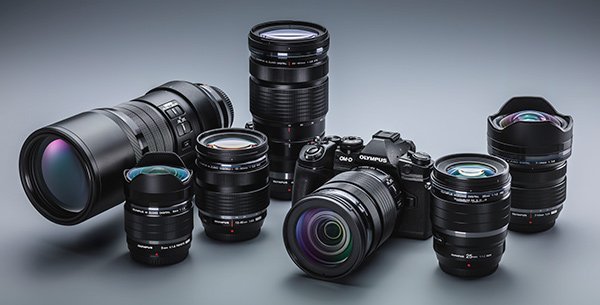
Large sensors generally require large lenses, yet the correspondence is not linear. Balancing image quality and size presently favors Micro Four-Thirds which delivers high-quality images while offering many of the smallest lenses on the market, providing this system with a significant saving in bulk compared to others. A mirrorless design allows normal and wide-angle lenses to be made smaller than similarly specified SLR lenses. When it comes to telephoto lenses, there is virtually no difference between lenses covering the same imaging circle. For this reason, the difference in bulk between a single-lens mirrorless and DSLR is more significant than a camera with a complete set of lenses.
In the next pages of this Mirrorless Digital Camera Buying Guide, each system is explained in detail with a breakdown of camera classes and available lenses for the system. Given that some platforms have been growing over 10 years and others are less than 2 years old, there is a tremendous difference among lens lineups. The creates some important restrictions when it comes to various photographic subjects until native lenses grow from the original manufacturer and third-party makers.
The 5 key factors to select a Mirrorless System are:
 The primary advice for nearly every type of purchase is to consider your subjects first. The type of photography and its main subjects dictate which lenses are needed. This means the focal-range, maximum aperture, weather resistance and magnification.
The primary advice for nearly every type of purchase is to consider your subjects first. The type of photography and its main subjects dictate which lenses are needed. This means the focal-range, maximum aperture, weather resistance and magnification. The level at which image quality is sufficient is key to selecting a sensor-size. It makes little difference when shooting on a tripod when low ISO is usable. Without the luxury of a tripod, low-light photography greatly benefits from a large sensor.
The level at which image quality is sufficient is key to selecting a sensor-size. It makes little difference when shooting on a tripod when low ISO is usable. Without the luxury of a tripod, low-light photography greatly benefits from a large sensor. Mirrorless systems greatly vary in size and so it crucial to consider the total bulk of all the gear that is needed at the same time. Travel Photography is the extreme example where gear must be carried between locations with strict size restrictions and carried back and forth.
Mirrorless systems greatly vary in size and so it crucial to consider the total bulk of all the gear that is needed at the same time. Travel Photography is the extreme example where gear must be carried between locations with strict size restrictions and carried back and forth. Digital cameras are expensive and a set of lenses costs much more. Given the time it takes for most to afford new gear, it is important to consider which currently-owned gear can be fully used on a new system. Adapters exist yet only some allow full electronic communication for AF and ISImage Stabilization is one of the least compatible features which gives a huge advantage to cameras with it built-in. Although mechanically adapted lenses without contacts require their focal-length to be entered manually into the camera which is inconvenient for zoom lenses..
Digital cameras are expensive and a set of lenses costs much more. Given the time it takes for most to afford new gear, it is important to consider which currently-owned gear can be fully used on a new system. Adapters exist yet only some allow full electronic communication for AF and ISImage Stabilization is one of the least compatible features which gives a huge advantage to cameras with it built-in. Although mechanically adapted lenses without contacts require their focal-length to be entered manually into the camera which is inconvenient for zoom lenses.. The cost of switching systems is high and so it is important to consider future photographic needs even when buying a first mirrorless camera and lens. Weatherproofing is one example where both the camera and lens need to be, so by choosing weatherproof lenses, one can upgrade the body later.
The cost of switching systems is high and so it is important to consider future photographic needs even when buying a first mirrorless camera and lens. Weatherproofing is one example where both the camera and lens need to be, so by choosing weatherproof lenses, one can upgrade the body later.
Next
Proceed to Step 3 to learn about Mirrorless Camera Systems from each manufacturer. There we compare what each brand has to offer considering cameras and lenses as a system.
Please Support Neocamera
All information on Neocamera is provided free of charge yet running this website is a huge endeavor. Purchases made via affiliate links found throughout the site help keep it running and up-to-date. There is no additional cost to you, so please consider buying via these links to our affilates:
If you found any information on this site valuable and did not purchase via our affiliate links, please considering donating via PayPal:
Any amount will be greatly appreaciated. Thank you for your support!
New Cameras & Lenses

Sony FE 50-150mm F/2 GM
Weatherproof
Sony E Mount Zoom
2025-04-22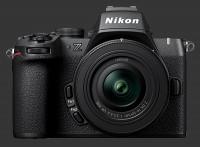
Nikon Z5 II
24 Megapixels Mirrorless
Nikon Z Lens Mount
Built-in Stabilization
Weatherproof
2025-04-03
Canon RF-S 14-30mm F/4-6.3 IS STM PZ
Stabilization
Canon RF Mount Zoom
2025-03-26
Canon RF 20mm F/1.4L VCM
Weatherproof
Canon RF Mount Prime Lens
2025-03-26
Canon EOS R50 V
24 Megapixels Mirrorless
Canon RF Lens Mount
2025-03-26
Venus Optics Laowa 14mm T/2.6 Zero-D VV Cine
Sony E Mount Prime Lens
2025-03-25
Updates
2025.01.18

Fujifilm GFX 2025 Lens Roundup
Lens Review roundup of Fujifilm GFX Medium-Format lenses. Quality, performance and handling of the GF20-35mm F/4R WR, GF30mm F/3.5 Tilt-Shift and the GF55mm F/1.7.
2024.11.18

Best 2024 Photography Gifts for Every Budget
Great gifts for photographers and photo enthusiasts selected for every budget among the best products of 2024.
2024.08.07

Eye Protection Tips for Professional Photographers
The four main considerations for professional photographers regarding eyewear.
2024.07.14

Fujifilm X100VI Review
Flagship fixed-lens compact digital camera with a 40 MP sensor and Image-Stabilization, a first for the series. Retro design featuring dual control-dials, plus direct ISO, Shutter-Speed and EC dials. Its hybrid viewfinder can switch between EVF and OVF mode.
2024.05.09

Fujifilm GFX100 II Review
Flagship 102 Megapixels Medium-Format Mirrorless Digital Camera with 8-Stop 5-Axis IBIS, 8 FPS Drive, 8K Video and 400 MP Super-Resolution capture in a weatherproof and freezeproof body with dual control-dials and dual memory-card slots.
2024.04.03

Fujifilm X-T5 Review
Newest Fujifilm flagship boasting a 40 MP APS-C sensor, 5-axis IBIS with 7-stop efficiency, 15 FPS continuous drive, 6.2K Video capture, dual control-dials and dual SDXC UHS-II slots in a sturdy weatherproof and freezeproof body.
2023.11.20

Best Digital Cameras of 2023
Find out which are the Best Digital Cameras of 2023. All the new Mirrorless Digital Cameras from entry-level to high-end professional.
2023.07.10

Fujifilm X-H2 Review
40 Megapixels APS-C Hybrid Mirrorless Digital Camera with 7-stop IBIS. Fastest shutter ever and 8K video capture. Large builtin EVF with 0.8X magnification and 5.8 MP, plus an Eye-Start Sensor. Packed with features and large number of controls in a weatherproof and freezeproof body.
2023.05.07

Sony FE 20-70mm F/4G Review
Review of the unique Sony FE 20-70mm F/4G lens. The optical zoom of this lens spans ultra-wide-angle and medium focal-length coverage, making it one of the most versatile Full-Frame lenses on the market.
2023.01.15

Huion Inspiroy Dial 2 Review
Review of the Huion Inspiroy Dial 2 tablet, a medium sized drawing surface with dual dials and customizable buttons. Connects via USB-C or Bluetooth 5.0 with Windows, Linux and Android support.
2022.12.08

How to Pack for a Photo Trip
Find out how to pack for a travel photography trip, carry your gear safely while meeting airline regulations.
2022.11.13

Best Digital Cameras of 2022
The best digital cameras of 2022. A short list of the most outstanding models in their respective categories. Choose one for yourself or as a gift.
2025.01.18
2024.11.18
2024.08.07
2024.07.14
2024.05.09
2024.04.03
2023.11.20
2023.07.10
2023.05.07
2023.01.15
2022.12.08
2022.11.13
NEWS
2025.04.22

Sony Unveils Brightest Full-Frame Telephoto Zoom Lens
Lens
2025.04.03

Nikon Released Second Generation Z5 Full-Frame Mirrorless
Digital Camera
2025.03.26

Canon Launches Pair of Cameras and Lenses
Digital Camera ○ Lens
2025.03.25

Venus Optics Launches Vista Vision Cine Lenses
Lens
2025.03.24

Think Tank Photo Walker Pro
Bag
2025.03.20

Fujifilm First Fixed Lens Medium-Format Camera
Digital Camera
2025.02.26

Sony Launches Two New Lenses at CP+2025
Lens
2025.02.25

CP+2025 Showcases Numerous Launches
Digital Camera ○ Lens
2025.02.13

Nikon Launches 5X Full-Frame Power-Zoom Lens
Lens
2025.02.05

Nikon Refreshes Flagship Ultra-Zoom
Digital Camera
2025.02.05

Nikon Launches Ultra-Bright 35mm F/1.2 Prime Lens
Lens
2025.01.21

Fujifilm Evolves INSTAX Wide
Digital Camera









